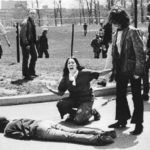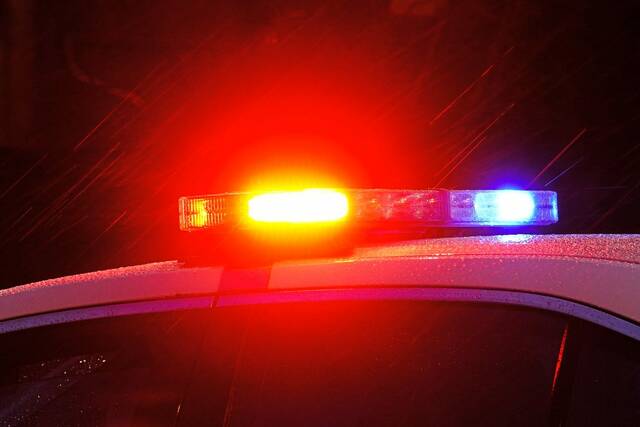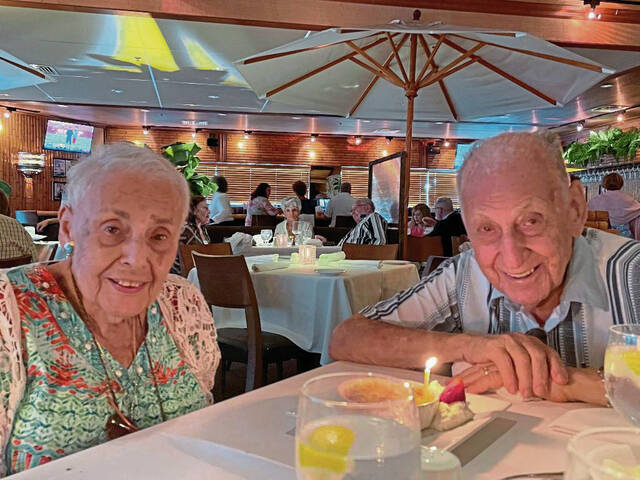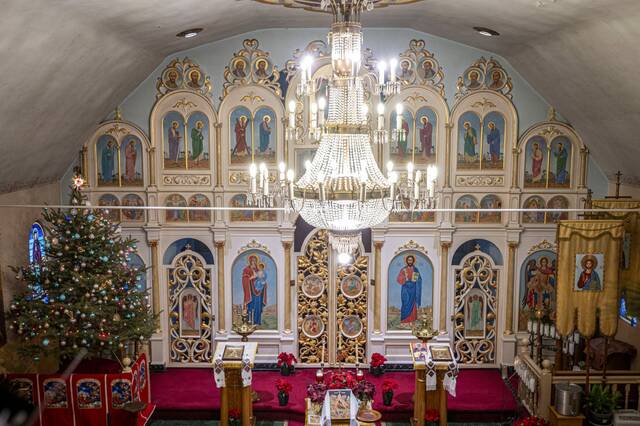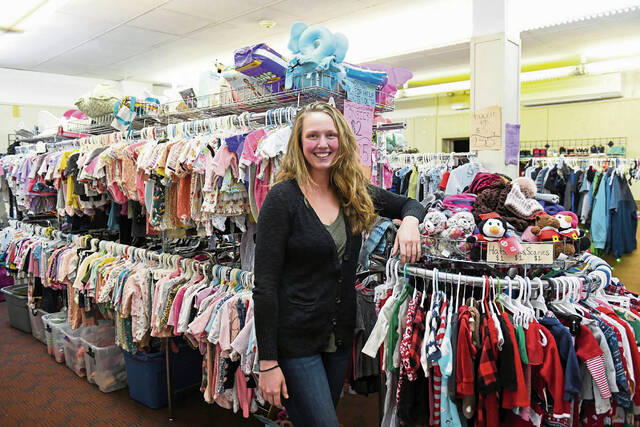John Filo couldn’t get out of Ohio fast enough.
It was early afternoon on May 4, 1970, and he was driving with rolls of film he had hidden in his red Volkswagen Beetle. The film contained photos Filo had just taken — images of the killings of unarmed students protesting against the Vietnam War at Kent State University, and a campus under siege by members of the Ohio National Guard.
It was a bloody scene, and his adrenaline was pumping. He knew that he was fortunate he wasn’t hit by one or more of the bullets that seemed to be coming from all directions.
Filo, a Natrona Heights native, was a 21-year-old Kent State journalism student and part-time news photographer. As he made his way off the campus, he watched a national guardsman cut a phone line. He decided it was not a good sign, that it was part of an effort to control how the news got out.
“I figured it was only a matter of time before they figured out who was there and who took pictures,” said Filo.
He was worried that he would be stopped, apprehended and, worst of all, have his film confiscated by the authorities. Filo was afraid the truth about what happened might not be told. A false version of the events was already circulating.
“The initial radio reports were saying the students were killed in a ‘shootout’ at Kent State. We were there. We knew this was totally wrong. I’m thinking this is another one of these cover-ups you hear about.”
Filo had to get to a place where it was safe to print and publish his pictures.
“My first instinct was to run to the wire service, but I didn’t know where it was in Cleveland, and I really didn’t like the idea of being in Ohio,” said Filo.
His fear was based on a feeling he had about the Ohio National Guard and Ohio Gov. Jim Rhodes, who was then running for Senate.
“I just felt like, ‘Ohio is not a good place to be. Nobody knows me here. Why don’t I go to where I can trust somebody and they can trust me.’ ”
He decided to drive to Tarentum, where he had worked for the past few summers at the Valley Daily News.
Caught in the line of fire
By 1970, protests against the Vietnam War had been going on for years on college campuses and elsewhere across the U.S. But the tension at Kent State that day was ratcheted up significantly by President Nixon’s decision days earlier to invade Cambodia. It was something the Nixon administration referred to as an “incursion,” but the move had infuriated those who were fed up with the Vietnam War and the idea that expanding the war would shorten it.
Though Filo could not have known just how violent the confrontation between students and National Guard soldiers would become May 4, he was aware people on both sides were suspicious of photographers.
“What I try to remind people is that being a photographer back then and being in a situation like that, no one liked you,” said Filo during a phone interview from his home in New York City.
“Students didn’t like you because they figured you were some plainclothes guy working for some law enforcement group, gathering pictures. Law enforcement groups thought you were trying to make police brutality photos, so they didn’t like you.
“Even when I was shooting pictures of the bodies in the street, there were people screaming in my ear, ‘What kind of a pig are you?’ as I was shooting this horrific scene.”
Even though protesters had trashed the town of Kent and burned down the ROTC building on campus over the weekend, there weren’t any real indications that such a horrific scene was about to take place when students began demonstrating shortly after noon on that sunny, windy Monday.
While thousands gathered on the Commons area of the campus to protest the expansion of the war in Southeast Asia, many students were focused on the idea of a student strike to shut down the university.
University officials prohibited the event. About 100 Ohio National Guardsmen carrying M-1 military rifles were stationed at what was left of the ROTC building.
“The guardsmen were on one side of the Commons and the students were on the other,” said Filo.
Students were ordered to disperse and when they didn’t, tear gas was released. The guardsmen then marched across the Commons and forced the protesters to move up nearby Blanket Hill and then down the other side of the hill, toward a practice football field. The field was enclosed with fencing that trapped the guardsmen with the angry protesters who, by this time, were shouting and throwing rocks.
The guardsmen retreated back up Blanket Hill. The crowd was dispersed. At that point, Filo figured it was the end of the confrontation.
But when the guardsmen reached the top of the hill, they pointed their guns downhill and started firing.
“I thought it was a scare tactic. I took a picture. Then someone pointed a rifle in my direction, and I figured I’d take a picture of that. The gun went off and a sculpture in my field of view erupted into a cloud of rust, and a chunk of bark came off a tree. By the time I got the camera and picked up the focus again, I realized I’d been shot at.”
Suddenly, Filo was dodging people who were fleeing. He jumped around and tried to avoid getting knocked down.
“Then I checked myself, thinking — I could be in a state of shock and not know I’d been shot.” He hadn’t been. But as Filo looked to his left, he could see someone lying on the asphalt next to a large amount of blood that had spilled out of him in a matter of a few seconds.
“I said to myself, ‘Oh, I’m out of here’ and I ran to the bottom of the hill. And then I said to myself, ‘What are you fleeing for now? It’s over.’ ”
The iconic photo
Filo knew the person he saw lying in the street in a pool of blood was dead. After first running away, he came back knowing he had to take photographs.
“This person was sort of left alone, just in the street,” Filo said. “I started making pictures, and in the first few frames I see this girl running up the street and she kneels down beside the body.”
Filo became aware his camera was running out of film and that he didn’t have many frames left. He had more rolls in his bag, but taking the time to load meant risking the loss of the moment.
“I only had one camera. I wanted to get in a better position, to get her more in front and see what she was doing with that body. And you could see something building in her, the emotions starting to develop. I was thinking, ‘You’re going to run out of film.’ Then she let out a scream, and I shot a picture.”
The photo of 14-year-old runaway Mary Ann Vecchio kneeling and crying over the body of Jeffrey Miller is among the most indelible images connected with the Vietnam War. It’s as powerful as the photograph by Nick Ut of the naked 9-year-old child known as Napalm Girl, and the image by Eddie Adams of a North Vietnamese man being executed with a point-blank gunshot to the head.
In all, four Kent State students were killed and nine were wounded. In addition to Miller, the dead were William Schroeder, Sandra Scheuer and Allison Krause, who was from the Pittsburgh suburb of Churchill.
Before Filo drove away, he put his unused rolls of film in his pockets and camera bag, figuring that if he got stopped, that’s what he would hand over.
He hopped on the turnpike and made a 2½-hour drive to Tarentum, ending up in the newsroom of the Valley Daily News and Daily Dispatch. He had worked there during his summers since Har-Brack High School.
“As soon as I got into Pennsylvania on the turnpike, I called the paper. I knew I could go there and at least process the film and get it out.”
Filo’s photos of the Kent State shootings were transmitted on the Associated Press and United Press International wire services and published in newspapers around the world.
For the local papers, Filo wrote a first-person story to go with his pictures.
Hate calls and hate mail
Filo stayed up until 2 a.m. but wasn’t able to sleep in the next day. That’s because by 9 a.m., two FBI agents were waiting for him in the kitchen of his parent’s house so they could take his deposition.
In the days and weeks that followed, Filo received hate calls and hate mail from people who refused to believe the Mary Ann Vecchio picture was real.
“The phone would ring all night long. People would call you a communist, and we would just hang up. Finally, I just told my parents to take the phone off the hook by 7 o’clock.
“They got hate mail at the (Valley Daily News and Daily Dispatch), and I believe some people even canceled their subscriptions.”
Despite that bit of grief, Filo received at least one substantial reward for his famous image: the 1971 Pulitzer Prize in Spot News Photography.
Today, he is a vice president at CBS, where he oversees production of promotional photos.
But despite being blessed with the good fortune to be in a position to use his skills to create one of the most important American images of the 20th century, there are still issues that Filo says he struggles with, including recurring thoughts about the event 50 years ago.
“It took me years to come to grips with ‘how did I get missed?’ I knew where I was standing. I knew where other people got shot. How did that happen? I’ve spent many nights up thinking about that,” Filo said. “It’s to the point where it either drives you crazy or you accept it as just … fate.
“I’ve always felt lucky. Not a day goes by where I don’t think about that day.”





